Public transit in New York City is both vast and dependable throughout the city. The Metropolitan Transportation Authority (MTA) is in charge of its operation, and it includes subways, buses, commuter railroads, and ferries among its modes of transportation. The subway is by far the most common and widely used mode of public transit, and it spans the majority of the city. Buses are frequently employed for shorter journeys since they are able to access a greater number of regions than subways do. Both the Long Island Rail Road and the Metro-North Railroad offer service to the boroughs and suburbs of New York City that are located beyond the city proper. In addition, there are ferries that run between the city itself and Staten Island as well as other parts of New York. Because rides on any and all types of public transit are reasonably priced, getting around the city is a breeze.
Metro system in NEW YORK CITY – Basic information
The Metropolitan Transit Authority (MTA) operates one of the largest, most advanced, and busiest public transit networks in the world: New York City’s Subway System. With its network of 24 subway lines, 6 commuter train lines, and more than 450 stations, it provides service to all five boroughs of the city, including Manhattan, The Bronx, Queens, Brooklyn, and Staten Island. Because it is used by more than 5.6 million people on a daily basis, the subway system is an essential component of the city’s infrastructure. Because they are operational all day, every day of the year, and at all hours of the night, the city’s subway lines are an excellent and time-saving option for getting around the city. The Metro system is always being upgraded in order to give the highest level of service possible. This updating process includes the addition of additional lines, stations, and technological advancements. The New York City Subway System is an essential component of the city’s infrastructure due to its extensive network of several modes of public transportation.
The lines of the nEW YORK CITY subway system
New York City Subway is one of the oldest and most extensive public transportation systems in the world. It serves as the backbone of transportation for the city and its surrounding area. With an estimated 1.7 billion passengers each year, the subway system offers fast, convenient, and affordable transportation for everyone.
The New York City Subway system consists of 24 lines, which are divided into three parts: the A Division (also known as the numbered lines), the B Division (also known as the lettered lines), and the Staten Island Railway. The A Division consists of numbered lines 1 through 6, while the B Division consists of lettered lines A to L. The Staten Island Railway is an express service that connects Staten Island to Manhattan.
The A Division lines provide the most comprehensive coverage of the city, with most lines running 24 hours a day. The 1, 2, 3, 4, 5, and 6 lines are all local services that run along the east side of Manhattan, while the A, B, C, D, E, and F lines run along the west side of Manhattan. The 4, 5, and 6 lines are express services that make fewer stops than the local services.
- The B Division lines are the lettered lines that provide service to the Bronx, Brooklyn, and Queens.
- The A-line runs from 207th Street in Manhattan all the way to Far Rockaway in Queens
- The C and E lines run from 168th Street in Manhattan to Jamaica in Queens.
- The D and F lines run from Manhattan to Coney Island in Brooklyn
- The G line is a local service that only runs along the Brooklyn-Queens border.
The Staten Island Railway is an express service that runs from St. George in Staten Island to Whitehall Street in Manhattan. The railway offers a fast and convenient way to get to Manhattan from Staten Island and vice versa.
The New York City Subway system is an integral part of the city’s transportation network, providing millions of passengers with reliable and affordable transportation every day. With 24 lines and hundreds of stations, the subway system is an invaluable part of life in New York City.
Map of NEW YORK CITY Metro 2023 – Free Download in PDF
The map features an intuitive design that includes points of interest and public transportation routes. With the Metro 2023, users can even plan their trips in advance and find the best route for their destination. This map is truly a must-have for any New Yorker or visitor to the city, and the PDF download makes it even more convenient.
Public transport tickets in New York City – Best types for travelers & actual prices
The use of New York City’s public transit, which is both convenient and cost-effective, is one of the best options for getting around the city. Visitors have their choice of several different ticketing choices, each of which allows for a different level of access and can be purchased for a different amount of money.
The MetroCard, which grants riders access to the entirety of New York City’s public transportation network (including the subway and bus systems), is by far the most common and popular choice among visitors who are only in the city for a short amount of time. These cards are available for purchase in increments of one day, seven days, or thirty days, with the cost of each day being $7.75, $33, or $127 correspondingly. Because each ride on the metro or bus costs only $2.75, this is the most cost-effective choice for people who travel quite frequently.
The New York City Pass is an excellent choice for those who will be staying in the city for more than a few days. The bearer of this card is entitled to discounts at a variety of attractions and companies, in addition to having access to all public transportation systems. There is a seven-day, a fourteen-day, and a thirty-day pass option, each of which may be purchased for $32, $63, and $127 respectively.
The New York City Tourist Pass is an excellent option for travelers who desire a more personalized sightseeing adventure in the city. This card provides holders with access to cheap tickets for a variety of attractions, tours, and events, in addition to providing access to all public transportation systems. There is a choice of passes that last for 2, 3, 5, or 7 days, with the prices ranging from $35 to $50 to $65 to $80 accordingly.
Last but not least, the Single Ride MetroCard is the most convenient pass for those who will be in the city for little more than a few hours. These tickets can be purchased at any subway station for a total cost of $3.00 per ride, and they are valid for one ride only.
The 7-day MetroCard is the most convenient alternative for travelers who are going to be in New York City for three days. This card provides holders with access to all public transportation systems and allows them to take an unlimited number of rides throughout the validity period of the pass. If you want to move swiftly and easily throughout the city at the lowest possible cost, this option, which costs $33, is your best bet.
Summary of fares for public transport in New York City
- The NYC Tourist Pass offers access to all public transportation systems and discounted tickets for select attractions, tours, and events for 2-7 days with prices ranging from $35-80
- The New York City Pass grants access to all public transportation systems and discounts at select attractions and businesses for 7-30 days with prices ranging from $32-127
- The Single Ride MetroCard costs $3.00 per ride and is best for those visiting for just a few hours
- For tourists visiting NYC for three days, the 7-day MetroCard is the best option at $33
Timetables & Schedules of the New York City Metro system
The Metropolitan Transportation Authority maintains service on the New York City Subway System around the clock, seven days a week, every day of the year. The operating hours of the system are as follows: 5:00 am to 1:00 am, Monday through Friday; 6:00 am to 1:00 am, Saturday, Sunday, and holidays. In addition, there are express trains that operate during peak commuter times. A reduced schedule is in effect for the duration of the weekend for the system. Certain lines may follow a different timetable than usual depending on the route they take. For the most up-to-date information regarding the timetable of the Metro system, check out the website or download the Metro-North app offered by the MTA.
What Are Other Options For Public Transportation In New York City?
Because New York City is one of the busiest metropolitan centers in the world, having accessible and dependable public transit is absolutely necessary. There are numerous modes of public transit available to New Yorkers; nonetheless, the subway remains the city’s preferred mode of travel. The following is an overview of the various modes of public transit that are offered in New York City, along with specific information about each option.
Buses: Buses are an excellent way to get around the city because they are often more cost-effective than the metro and they cover a broad variety of locations. The Metropolitan Transportation Authority (MTA) is in charge of the operation of the vast majority of bus lines, and it runs both city buses and express buses under its own brand. The express buses are typically more expedient and can travel greater distances, while the city buses make regular stops throughout the city and can be used to get to the majority of the city’s most popular sites.
New York City residents choose the subway more than any other mode of public transit, and there’s a good reason for that. The Metropolitan Transportation Authority (MTA) provides subway service that is available around the clock, which is very helpful for commuters as well as tourists. Those who are in a rush should strongly consider taking the subway because it is also the mode of public transportation in the city that offers the quickest travel times.
Taxis: Taxis are a convenient mode of transportation in the city because they are accessible at all hours of the day and night and may be flagged down at any intersection. Taxis are typically more expensive than other modes of public transit such as the subway and buses; yet, they offer convenience and flexibility that other modes of transportation may not.
Ferries: If you want to get a different perspective of the city from the water, ferries are a fantastic alternative to consider. The Staten Island Ferry is the ferry line that travels the most frequently since it is the only one in the city that offers free rides between Staten Island and Manhattan. In addition to these, the City of Seattle operates a number of other ferry services that travel to other neighborhoods.
Bicycles: Riding a bicycle is a fun, low-cost, and physically beneficial way to move around the city. Bicycles are a terrific way to get around town. There is an excellent bike-share scheme in New York City, and there are numerous bike lanes spread out over the city to make it easier for bikers to get around.
How To Get From John F. Kennedy International aırport (JFK) To The City Center With Public Transport?
Traveling from John F. Kennedy International Airport (JFK) to the city center can be a daunting task for first-time visitors to New York City. Fortunately, there are a number of public transportation options available to get you to your destination quickly and easily.
The first option is to take the AirTrain JFK. This 24-hour service provides regular service from JFK to the Howard Beach and Jamaica Station subway stops. From there, you can take the A train to Manhattan and then switch to the subway line of your choice. The entire journey takes about 60 minutes and costs $7.75.
Another option is to take a taxi or ride-hailing service. Taxis are available at all terminals and the fare to the city center is about $50. Ride-hailing services such as Uber and Lyft are also available, but fares can vary depending on traffic.
The third option is to take the express bus. This service runs from JFK to Manhattan and takes about 60 minutes. The fare is $15 and buses run every 30 minutes.
Finally, you can also take the Long Island Railroad (LIRR). This service runs from JFK to Penn Station in Manhattan and takes about 40 minutes. The fare is $10.25 and trains run every 30 minutes.
No point which option you choose, the journey from JFK to the city center is relatively straightforward. With a little research and planning, you can be in the heart of the city in no time.
What kind of sightseeing do you have to see if you visit New York City for the first time?
Visitors come from all over the world to see the city of New York because it is home to so many famous sites and attractions that are on par with the best in the world. The following is a list of the most popular tourist destinations in New York City:
- The Empire State Building is a skyscraper designed in the Art Deco style that has become a symbol of New York City and is widely considered to be one of the most recognizable structures in the entire globe. Guests can take in the breathtaking panoramas from observation decks positioned on the 86th and 102nd floors of the building, respectively.
- The Statue of Liberty is a representation of democracy and freedom; it is located on Liberty Island and is a well-known landmark. Ferries will transport guests to the island, where they will be able to approach the copper artwork up close.
- Times Square: This is the busiest junction in the world, and it is home to some of the most well-known retailers and restaurants in the city. The name “Times Square” comes from the fact that it is located in the heart of New York City. In addition, tourists can watch one of the several performances that are performed on Broadway and watch the ball drop on New Year’s Eve.
- Central Park is an excellent area to unwind and take in some of the city’s many attractions because it is the largest park in the city. In the winter, guests have the option of going ice skating or taking a horse-drawn carriage ride. Other activities include going on a boat trip on the lake.
- The Brooklyn Bridge: This bridge spans the East River between Manhattan and Brooklyn, and it is widely considered to be one of the most iconic structures in the world. From the bridge, guests will be treated to breathtaking panoramas of the city, and they will also have the opportunity to walk across the structure.
- The Metropolitan Museum of Art is the largest art museum in the United States and contains more than two million different pieces of art in its collection. Visitors have the option of wandering among the numerous galleries and exhibitions or simply taking in the building’s breathtaking design.
- The One World Observatory, located in the tallest skyscraper in the Western Hemisphere, provides visitors with breathtaking panoramas of the metropolitan area. The observation decks on the 100th, 101st, and 102nd floors of the building provide guests with the opportunity to take in breathtaking vistas.
These attractions in New York City are sure to provide you with an experience that you won’t forget, as New York City is one of the most popular tourist destinations in the world. Everyone can find something of interest to them in New York City, thanks to the city’s abundance of renowned landmarks and attractions.
Summary of our tour guide for New York City
There are 8.6 million people that make their homes in the iconic and thriving city that is New York City. This city is recognized as the global capital of finance, culture, and the media, and as a result, it receives millions of visitors each year. Both city residents and visitors rely heavily on the public transportation system as their primary mode of conveyance because it is an essential component of city life. The Metropolitan Transportation Authority (MTA) is responsible for the operation of the largest public transportation system in the world, which consists of subways, buses, and commuter trains. The Metropolitan Transportation Authority (MTA) makes it extremely convenient to travel throughout New York City because to its around-the-clock service and dependable rail and bus networks.
Top 5 FAQs and answers about New York City public transport?
The public transportation network is an essential component of New York City’s infrastructure, given the city’s status as one of the most populous and busiest metropolitan areas on the planet. Every day, the city’s subway and bus system are essential for the mobility of millions of people who need to travel around. It is essential to have a solid understanding of how the system operates in order to make significant time, monetary, and resource savings. The following are some of the questions that are asked the most frequently concerning public transportation in New York City.
Can you describe the various modes of public transportation that are available in New York City?
- The subway, buses, and ferries are the three modes of public transportation that make up New York City’s public transit system. With 24 lines covering the entire metro area, the subway is the city’s most comprehensive and widely used mode of public transit. In addition, New York City has a large bus network, which spans all five boroughs and includes more than 200 different routes. Staten Island, Manhattan, and the other boroughs are connected via a continuous ferry system.
Can you tell me about the prices for riding public transportation in New York City?
- Each ride on the metro or any of the city’s buses will cost you $2.75 in fare. You should get a MetroCard if you intend to take several travels on the subway or bus because it can hold a certain amount of money and be used for a number of different journeys. You also have the option of purchasing a MetroCard that is good for either seven days or thirty days of unlimited rides, which, if you want to make frequent use of the public transportation system, can help you save money.
What are the steps involved in purchasing a MetroCard?
- You can buy a MetroCard at any subway station or bus station that accepts the payment. You can also buy a MetroCard at select stores or online, both of which are located across the city.
Can you walk me through using a MetroCard?
- To use a MetroCard, just place the card’s magnetic stripe into the appropriate slot on the turnstile at any subway or bus station. The appropriate amount will be deducted from your card as soon as you leave the station.
If I am going to be using public transportation in New York City, what kinds of safety measures should I put in place?
- Maintaining vigilance and being aware of your surroundings when utilizing any kind of New York City public transportation is critical. You are strongly advised not to display expensive items or carry significant sums of cash on your person at any time. It is also recommended that you travel in groups and stay away from traveling at night by yourself. You always have the option of calling the police or an emergency hotline if you are concerned about your safety in any way.
You may minimize the amount of time, money, and effort spent on navigating the city by familiarizing yourself with the answers to the five most important questions regarding the public transportation system in New York City. You can now enjoy the city’s enormous network of public transportation whether you are a visitor or a resident, as it is open to everyone.
Useful links

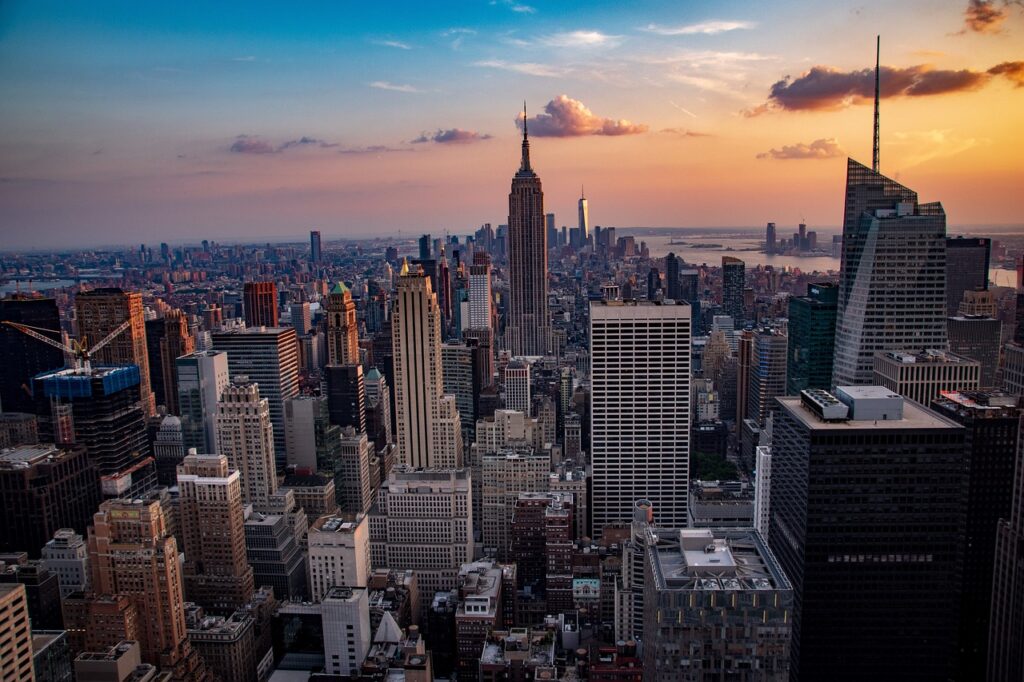
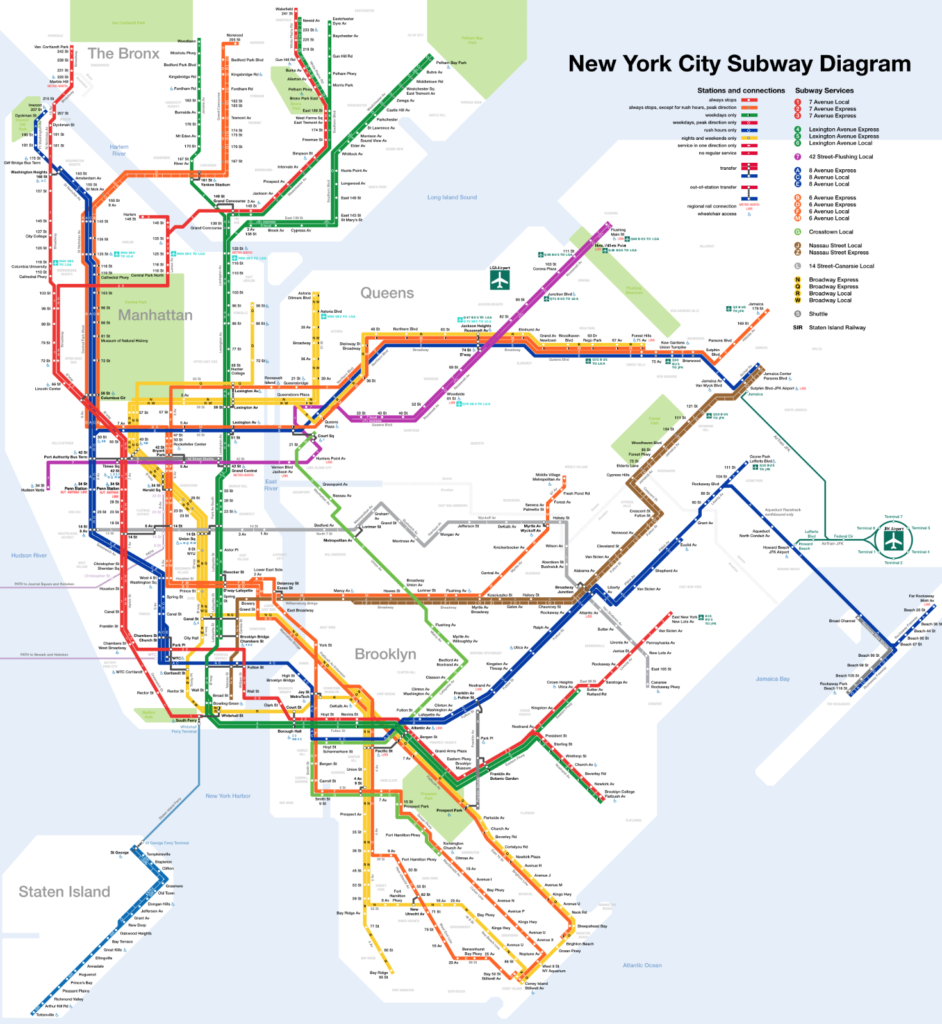
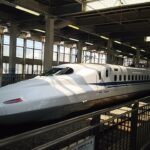
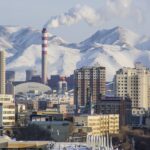
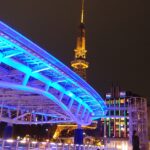



2 thoughts on “New York City Subway”